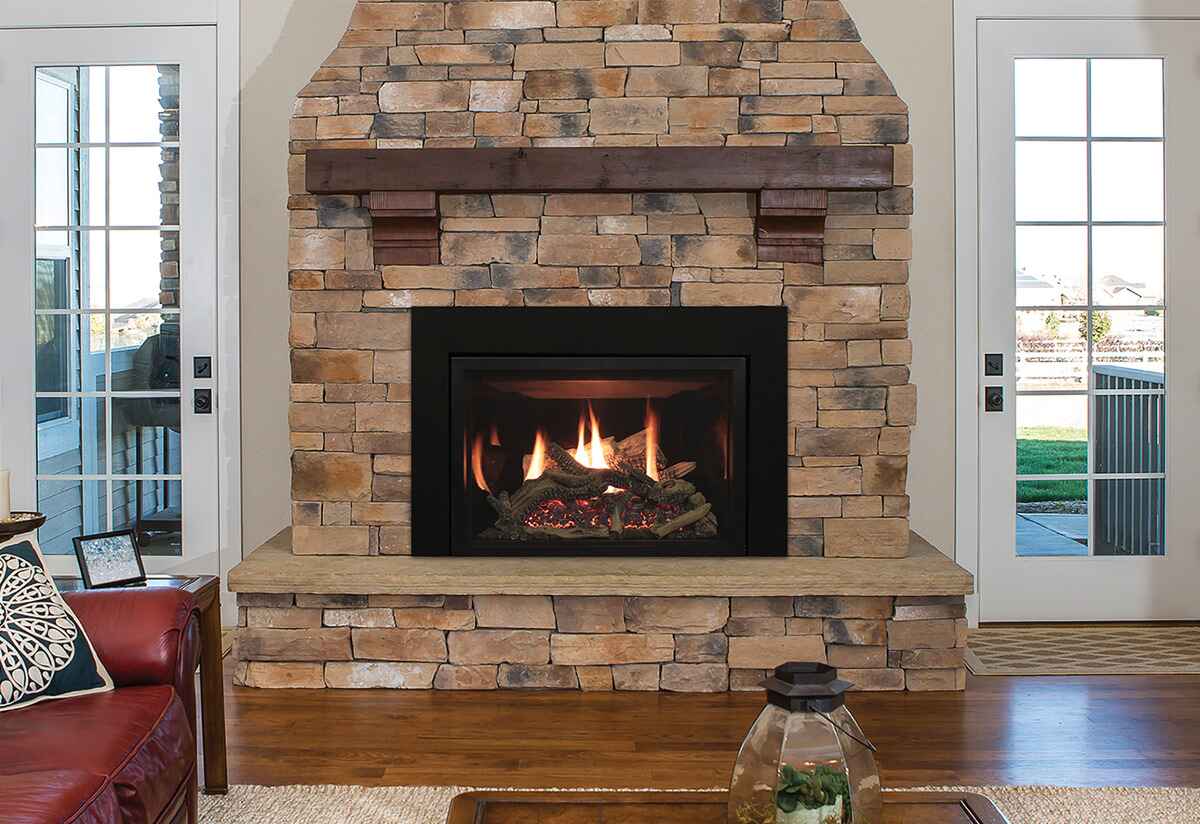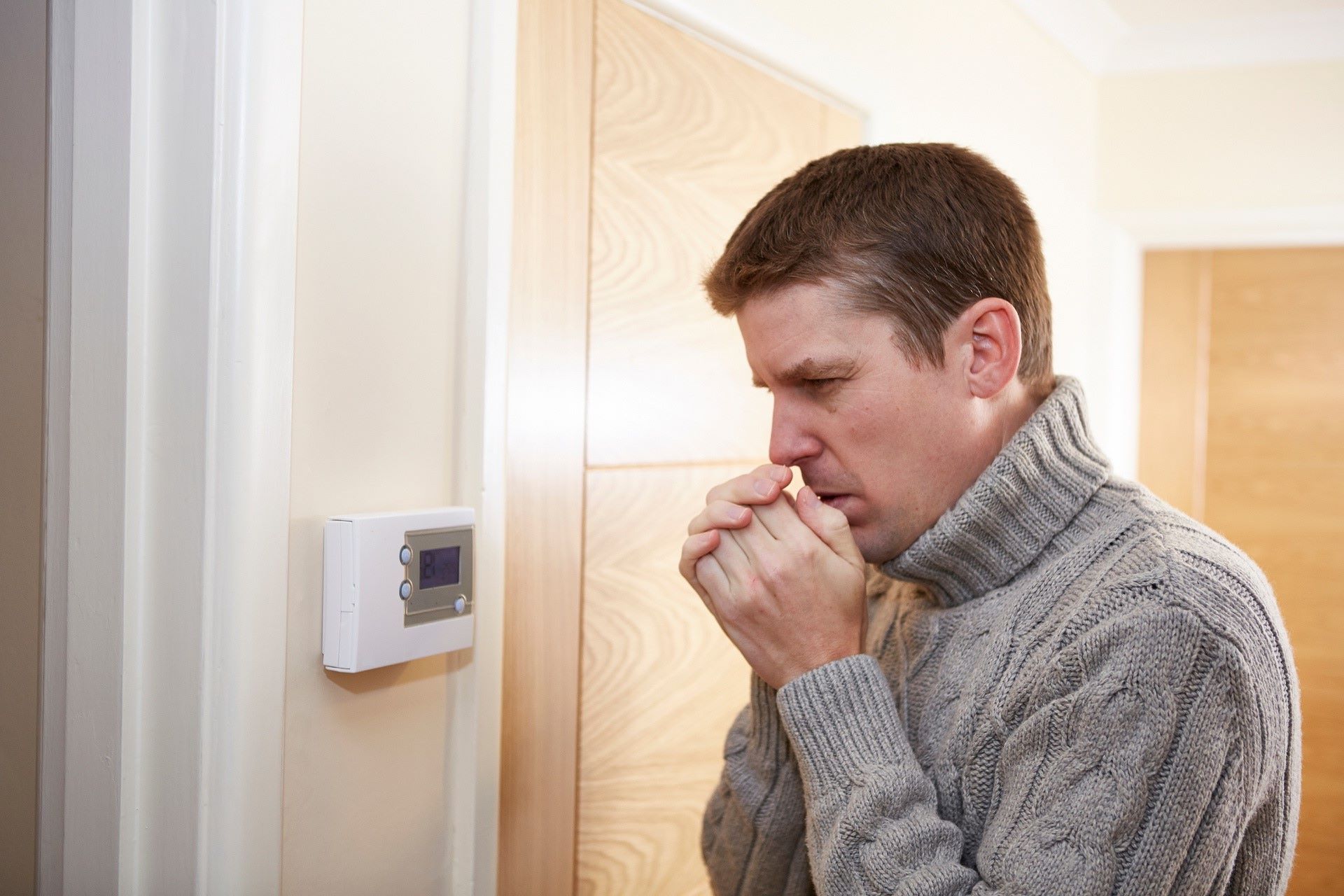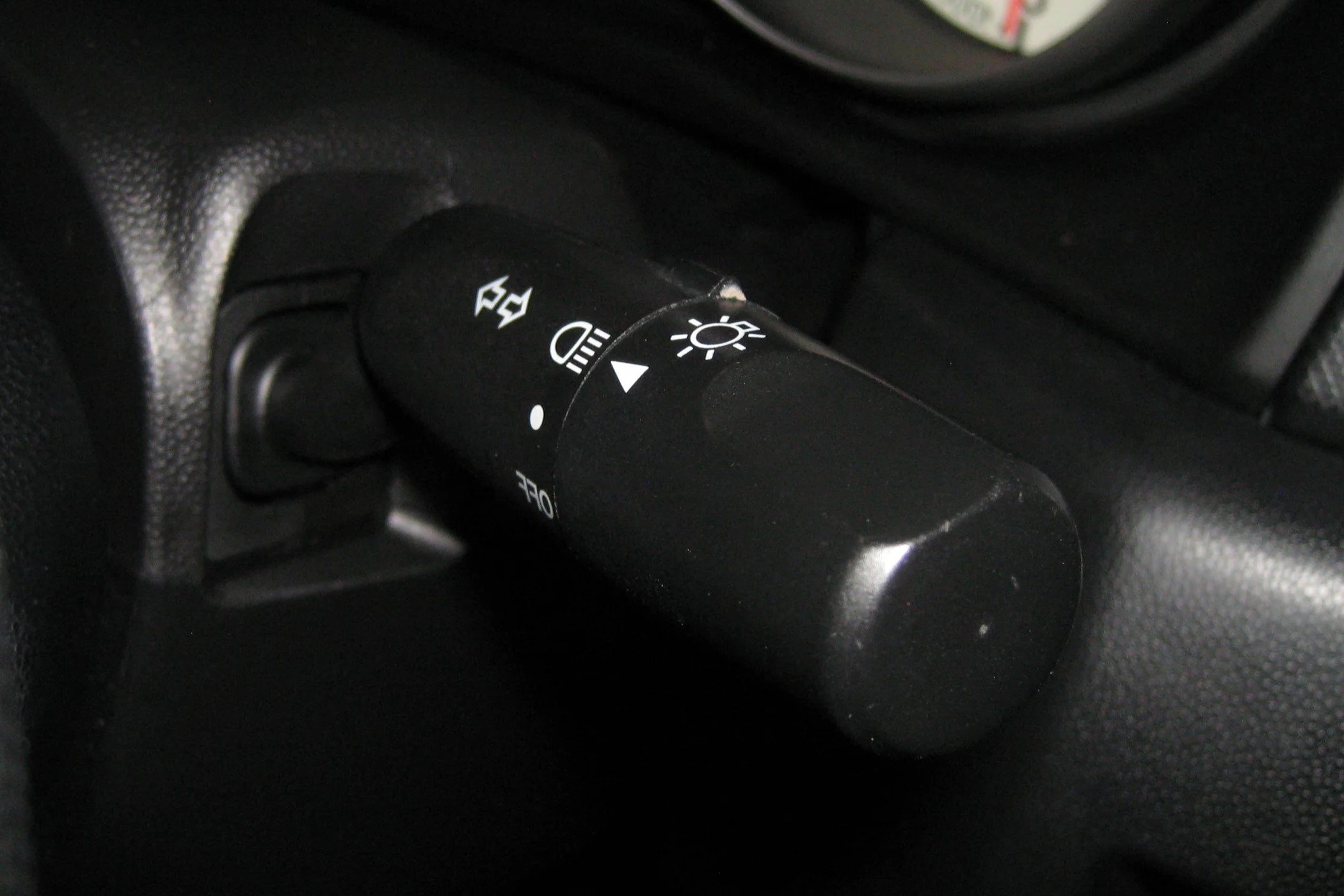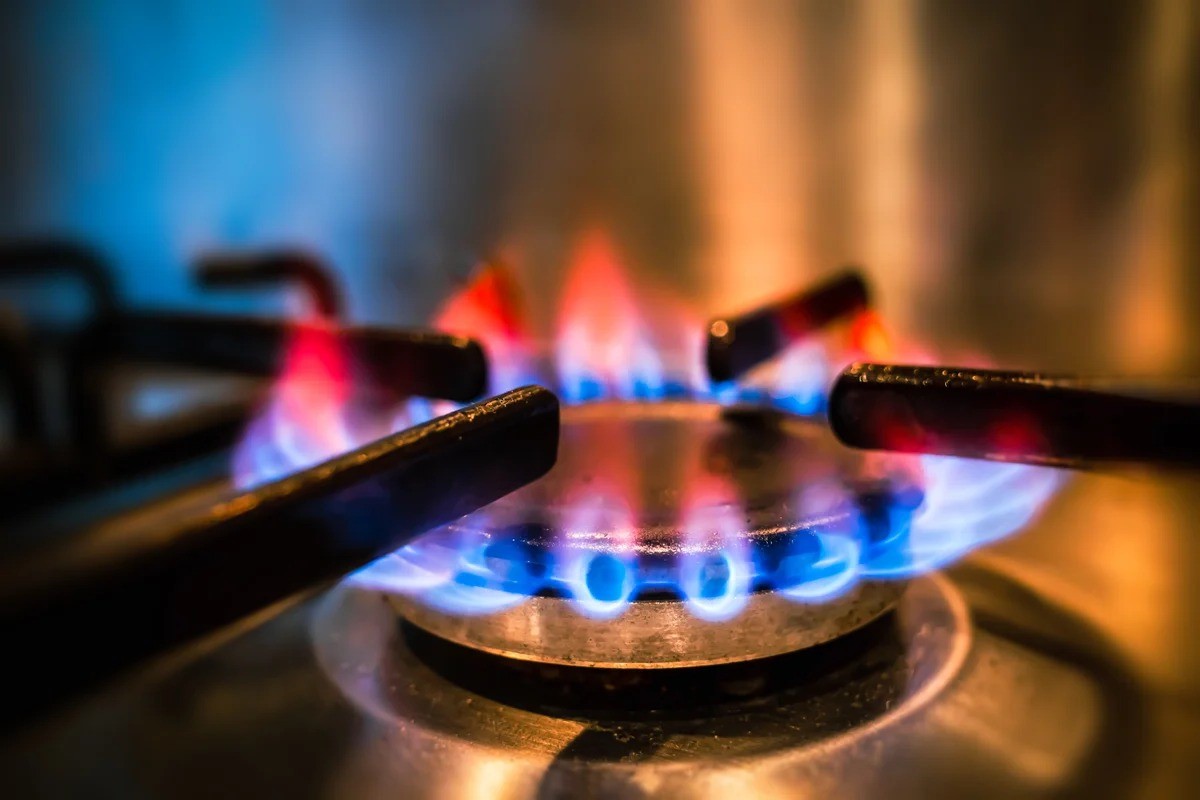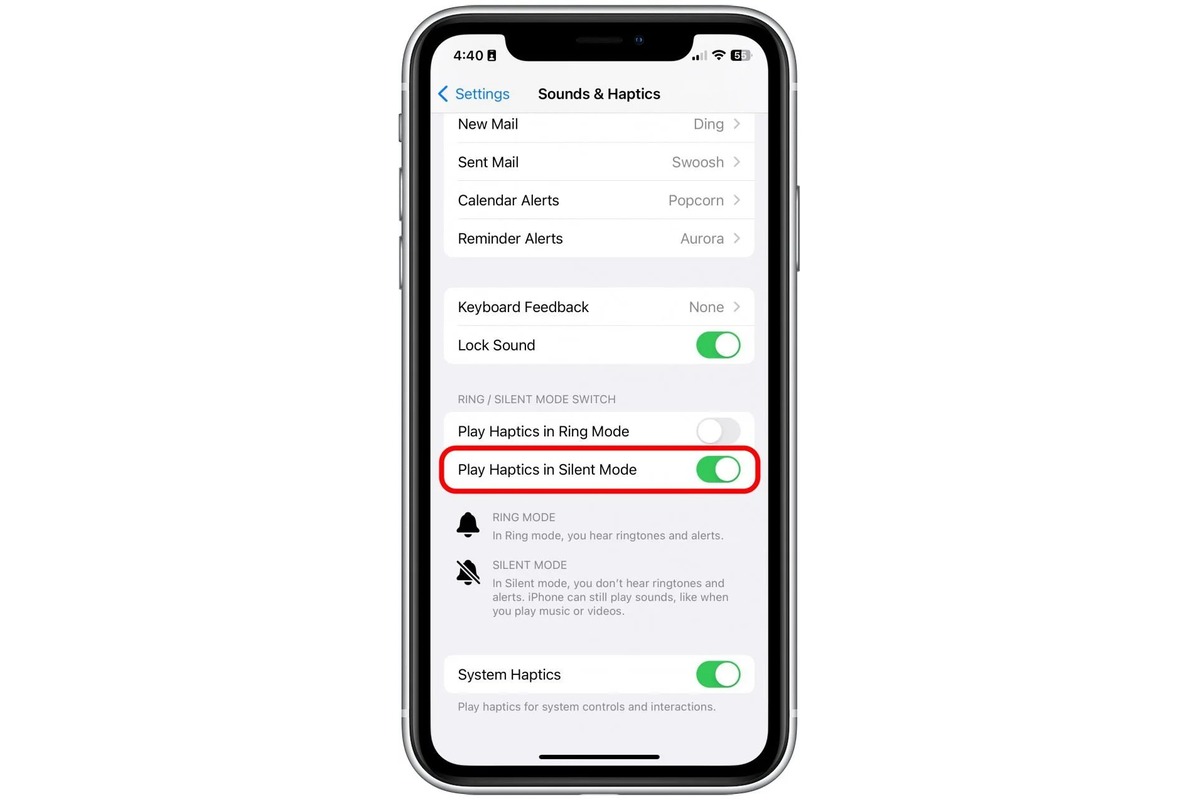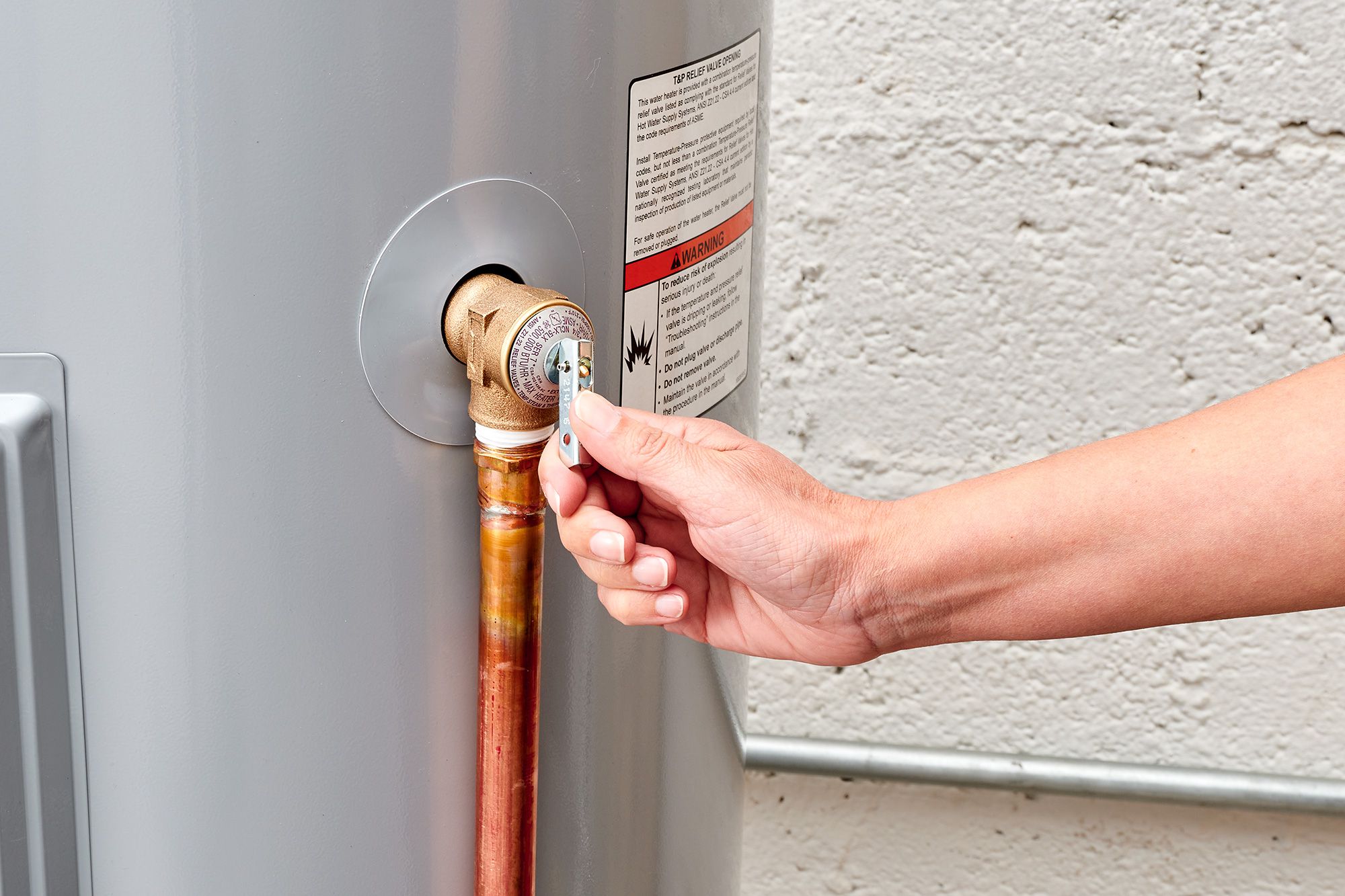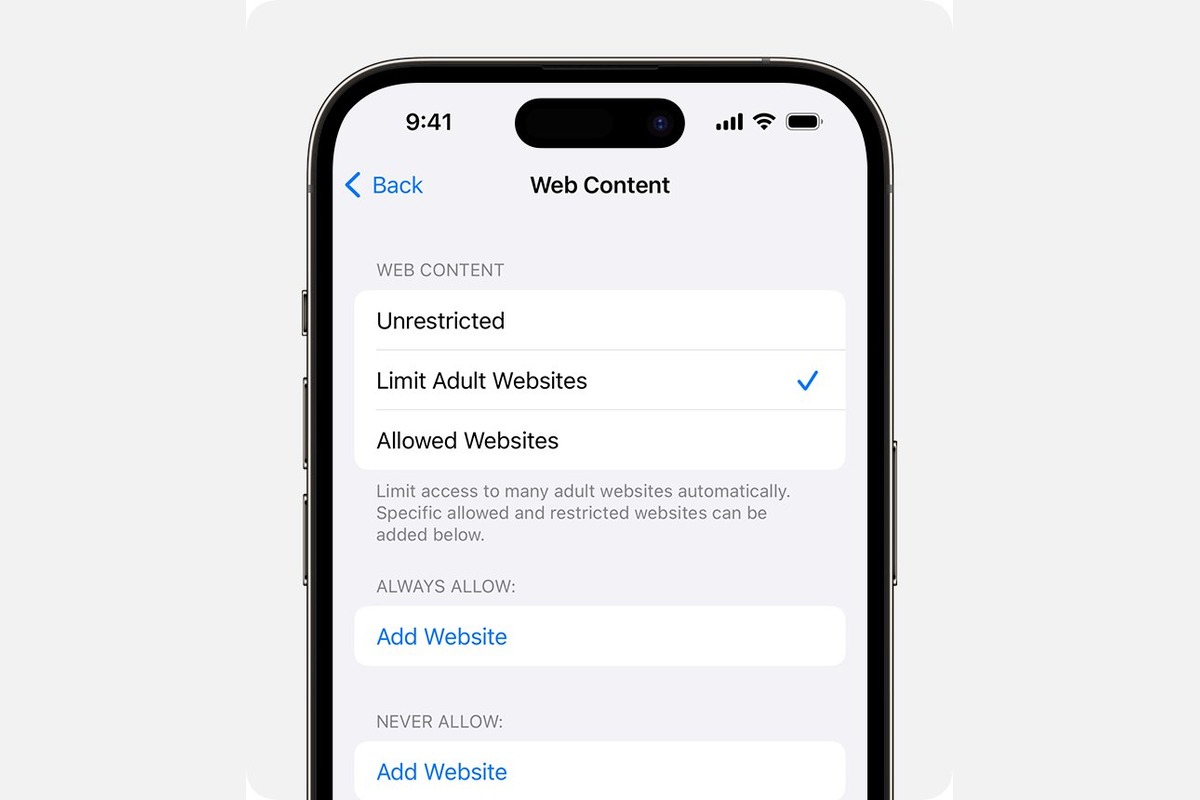Home>Home and Garden>How To Turn On Gas Fireplace


Home and Garden
How To Turn On Gas Fireplace
Published: March 5, 2024
Learn how to safely and effectively turn on your gas fireplace with our step-by-step guide. Create a cozy and inviting atmosphere in your home with this simple home and garden improvement.
(Many of the links in this article redirect to a specific reviewed product. Your purchase of these products through affiliate links helps to generate commission for Noodls.com, at no extra cost. Learn more)
Table of Contents
Introduction
A gas fireplace can bring warmth, comfort, and ambiance to any home. Whether it's a chilly winter evening or a cozy gathering with loved ones, a gas fireplace can be the focal point of a room, creating a welcoming and inviting atmosphere. However, for those who are new to gas fireplaces, the process of turning them on and off may seem daunting at first. Fear not, as this comprehensive guide will walk you through the steps to safely and effectively operate your gas fireplace.
From ensuring safety precautions are in place to checking for gas leaks, lighting the pilot light, and adjusting the flame, this article will cover everything you need to know to confidently use your gas fireplace. Additionally, we'll provide maintenance and cleaning tips to keep your fireplace in optimal condition for years to come.
By the end of this guide, you'll have the knowledge and confidence to enjoy the warmth and comfort of your gas fireplace, knowing that you can operate it safely and efficiently. So, let's dive in and learn how to turn on and maintain a gas fireplace with ease and peace of mind.
Read more: How To Operate A Gas Fireplace
Safety Precautions
Before operating a gas fireplace, it's crucial to prioritize safety. By following these essential safety precautions, you can ensure a secure and worry-free experience when using your gas fireplace.
-
Read the Manual: Familiarize yourself with the manufacturer's instructions and safety guidelines provided in the user manual. Each gas fireplace model may have specific requirements and safety measures, so it's essential to understand the unique features and operational procedures of your unit.
-
Clear Surrounding Area: Keep the area around the gas fireplace clear of any flammable materials, such as curtains, furniture, or paper. Maintaining a safe distance between the fireplace and combustible items reduces the risk of accidental fires.
-
Install Carbon Monoxide Detectors: Carbon monoxide is a colorless, odorless gas that can be produced by gas-burning appliances. Install carbon monoxide detectors in the vicinity of the gas fireplace and regularly check their functionality to ensure early detection of any potential leaks.
-
Ventilation: Ensure that the room where the gas fireplace is located has adequate ventilation. Proper airflow helps prevent the buildup of carbon monoxide and ensures the efficient combustion of gas, contributing to a safer indoor environment.
-
Regular Inspections: Schedule annual inspections by a qualified technician to assess the condition of the gas fireplace, including the venting system, gas lines, and overall functionality. Timely inspections can identify and address any potential issues, enhancing the safety and performance of the fireplace.
-
Child Safety: If there are children in the household, consider installing a safety screen or gate around the fireplace to prevent accidental contact with the hot glass or flames. Educate children about the potential hazards of the fireplace and establish clear safety rules.
-
Gas Leaks: Familiarize yourself with the smell of natural gas, which is often described as similar to rotten eggs. If you detect this odor, evacuate the premises immediately and contact the gas company or emergency services from a safe location.
By adhering to these safety precautions, you can enjoy the warmth and comfort of your gas fireplace with peace of mind, knowing that you have taken the necessary steps to prioritize safety for yourself and your loved ones.
Checking for Gas Leaks
Before igniting your gas fireplace, it's crucial to ensure that there are no gas leaks, as natural gas is highly flammable and poses a potential safety hazard if not properly contained. Here's a detailed guide on how to check for gas leaks and what to do if you suspect a leak.
-
Visual Inspection: Start by visually examining the gas fireplace and its surrounding area for any signs of damage or wear on the gas lines. Look for cracks, corrosion, or loose fittings that could indicate a potential gas leak. Additionally, check for any unusual discoloration or soot accumulation around the fireplace, as these could be indicators of a gas leak.
-
Listen for Hissing Sounds: When the gas supply to the fireplace is turned on, listen for any hissing or whistling sounds near the gas lines or connections. These noises may suggest the presence of a gas leak and should be investigated further.
-
Smell for Gas Odor: Natural gas is odorless, but gas companies add a distinctive sulfur-like odor to help detect leaks. If you detect a strong, unpleasant odor similar to rotten eggs, it could indicate a gas leak. Take immediate action if you notice this smell, as it could signify a potentially dangerous situation.
-
Use a Gas Leak Detector: Consider using a gas leak detector, which is a handheld device designed to detect the presence of natural gas. Follow the manufacturer's instructions to properly use the detector, and carefully sweep it around the gas fireplace and connections to identify any gas leaks.
-
Check Gas Shut-Off Valve: Locate the gas shut-off valve for the fireplace and ensure that it is in the closed position before conducting any inspections. If the valve is difficult to turn or shows signs of damage, do not attempt to operate the fireplace and seek professional assistance.
-
Immediate Action: If you suspect a gas leak or notice any of the aforementioned signs, evacuate the premises immediately and contact the gas company or emergency services from a safe location. Avoid using any electrical devices, open flames, or creating sparks, as these could ignite the gas if present.
By diligently checking for gas leaks and promptly addressing any concerns, you can mitigate the risks associated with gas fireplaces and create a safer environment for yourself and your household. Regular inspections and heightened awareness of gas leak indicators are essential practices for maintaining the safety and functionality of your gas fireplace.
Lighting the Pilot Light
To begin the process of lighting the pilot light on your gas fireplace, it's essential to locate the pilot assembly, which is typically found near the bottom of the fireplace. The pilot assembly consists of a small gas line and a control knob, often accompanied by instructions or diagrams provided by the manufacturer. Here's a step-by-step guide to effectively light the pilot light and prepare the fireplace for operation:
-
Access the Pilot Assembly: Remove the access panel or cover to gain access to the pilot assembly. This may involve lifting a glass panel or accessing the area beneath the fireplace, depending on the design of your gas fireplace.
-
Locate the Control Knob: Once the pilot assembly is visible, locate the control knob, which is often labeled with "Pilot," "On," and "Off" positions. Set the control knob to the "Off" position and wait for a few minutes to allow any residual gas to dissipate.
-
Switch to Pilot Mode: After the waiting period, switch the control knob to the "Pilot" position. This step is crucial for preparing the pilot assembly to receive gas and ignite the pilot light.
-
Depress the Control Knob: While holding down the control knob in the "Pilot" position, press the ignition button or, if applicable, use a long-reach lighter to ignite the pilot light. Continue to depress the control knob for about 30 seconds to ensure that the pilot light remains lit.
-
Release the Control Knob: After the pilot light has been successfully ignited and remains lit, release the control knob. The pilot light should continue to burn steadily, providing the flame necessary to ignite the main burner of the gas fireplace.
-
Verify the Pilot Light: Take a moment to visually confirm that the pilot light is burning steadily and emitting a consistent, blue flame. A steady flame indicates that the pilot light is functioning correctly and is ready to ignite the main burner when needed.
-
Replace the Access Panel: Once the pilot light is lit and verified, securely replace the access panel or cover to ensure the safety and proper functioning of the gas fireplace.
By following these steps, you can effectively light the pilot light on your gas fireplace, setting the stage for a cozy and inviting atmosphere in your home. It's important to approach this process with attentiveness and care, ensuring that the pilot light is ignited safely and remains steady to facilitate the operation of the gas fireplace.
Turning on the Gas Fireplace
Once the pilot light is successfully ignited and burning steadily, you are ready to proceed with turning on the gas fireplace. This step involves activating the main burner to generate the warmth and comforting glow that gas fireplaces are known for. Here's a detailed guide on how to safely and effectively turn on the gas fireplace, allowing you to create a cozy and inviting ambiance in your living space.
-
Control Panel Access: Locate the control panel of your gas fireplace, which is typically positioned along the bottom front of the unit. The control panel houses the main burner control knob, allowing you to regulate the intensity of the flames and the amount of heat produced.
-
Ignition Sequence: Turn the main burner control knob to the "On" position, initiating the ignition sequence that will activate the main burner. As you do this, you may hear a clicking sound, indicating that the ignition system is working to ignite the gas and produce flames.
-
Observation and Adjustment: Once the main burner is ignited, observe the flames to ensure they are burning steadily and evenly. The flames should appear as a vibrant and consistent blue, indicating efficient combustion of the gas. If the flames appear irregular or discolored, turn off the gas fireplace immediately and seek professional assistance to address any potential issues.
-
Adjusting Flame Height: Many gas fireplaces are equipped with a flame height adjustment feature, allowing you to control the intensity of the flames. If desired, use the designated control knob to adjust the flame height to your preference, whether you prefer a gentle, flickering flame or a more robust and radiant display.
-
Enjoy the Warmth: With the main burner successfully ignited and the flames burning steadily, you can now bask in the comforting warmth and captivating glow of your gas fireplace. Whether it's a quiet evening at home or a gathering with loved ones, the ambiance created by the gas fireplace adds a touch of elegance and relaxation to any space.
By following these steps, you can confidently turn on your gas fireplace, creating a welcoming and cozy atmosphere in your home. It's essential to approach this process with attentiveness and care, ensuring that the main burner ignites safely and produces flames that burn steadily and evenly. With the gas fireplace in operation, you can embrace the warmth and comfort it provides, enhancing the ambiance of your living space.
Read more: How To Light A Gas Fireplace
Adjusting the Flame
After successfully igniting the main burner of your gas fireplace, you may have the option to adjust the flame height to achieve the desired ambiance and heating level. The ability to control the flame height provides flexibility in customizing the visual appeal and warmth output of the fireplace to suit different occasions and preferences.
To adjust the flame height, locate the designated control knob, often positioned on the control panel or within the fireplace unit. This knob allows you to regulate the flow of gas to the burner, directly influencing the intensity and size of the flames. Here's a step-by-step guide to effectively adjust the flame on your gas fireplace:
-
Locate the Control Knob: Identify the control knob designated for adjusting the flame height. It is typically labeled with markings indicating the direction for increasing or decreasing the flame intensity.
-
Gradual Adjustment: With a gentle and deliberate motion, turn the control knob in the desired direction to adjust the flame height. Clockwise rotation often increases the flame height, while counterclockwise rotation reduces it. Make gradual adjustments to observe the corresponding changes in the flame intensity.
-
Observation and Fine-Tuning: As you adjust the flame height, carefully observe the flames to ensure they maintain a steady and even appearance. A well-adjusted flame should exhibit a consistent, vibrant blue color, indicating efficient combustion of the gas. Fine-tune the flame height until you achieve the desired visual effect and heating level.
-
Consider the Setting: Tailor the flame height to complement the setting and mood of the environment. For a cozy and intimate atmosphere, a lower flame height may be preferred, creating a subtle and calming glow. In contrast, a higher flame height can enhance the visual impact and heat output, ideal for gatherings or colder evenings.
-
Safety and Moderation: While adjusting the flame height, prioritize safety and moderation. Avoid excessively high flame settings that may generate excessive heat or cause sooting, and be mindful of any specific guidelines provided by the fireplace manufacturer regarding flame adjustment.
By following these steps, you can effectively adjust the flame height on your gas fireplace, personalizing the visual appeal and warmth output to suit your preferences. Whether it's creating a tranquil ambiance for relaxation or elevating the atmosphere for social gatherings, the ability to adjust the flame adds versatility and customization to the experience of enjoying your gas fireplace.
Turning Off the Gas Fireplace
Turning off a gas fireplace is a crucial step in ensuring safety and conserving energy when the fireplace is not in use. Properly shutting down the fireplace also contributes to the longevity and efficient operation of the unit. Here's a detailed guide on how to safely and effectively turn off the gas fireplace, allowing you to transition from a cozy ambiance to a secure and dormant state.
-
Adjust the Flame: Before turning off the gas fireplace, it's advisable to reduce the flame height gradually. This step helps to diminish the heat output and visual impact of the flames, preparing the fireplace for shutdown.
-
Locate the Control Panel: Identify the control panel of the gas fireplace, typically positioned along the bottom front of the unit. The control panel houses the main burner control knob and other operational features.
-
Turn Off the Main Burner: Locate the main burner control knob and switch it to the "Off" position. This action ceases the flow of gas to the burner, extinguishing the flames and halting the heat production.
-
Wait for Cooling: After turning off the main burner, allow the fireplace to cool down for a sufficient period. This cooling phase ensures that the fireplace components, including the burner and surrounding materials, return to a safe temperature for maintenance and future use.
-
Close the Gas Shut-Off Valve: If your gas fireplace is equipped with a dedicated gas shut-off valve, ensure that it is securely closed to prevent the flow of gas to the fireplace. This additional safety measure offers peace of mind when the fireplace is not in operation for extended periods.
-
Replace the Access Panel: Once the gas fireplace has been turned off and allowed to cool, securely replace the access panel or cover. This step safeguards the internal components of the fireplace and maintains the aesthetic appeal of the unit.
By following these steps, you can confidently and effectively turn off your gas fireplace, transitioning it to a safe and dormant state when not in use. This process not only promotes safety and energy conservation but also contributes to the longevity and optimal performance of your gas fireplace. With the fireplace securely turned off, you can enjoy peace of mind and efficient operation, knowing that the unit has been properly maintained and prepared for future use.
Maintenance and Cleaning Tips
Proper maintenance and regular cleaning are essential for ensuring the longevity, efficiency, and safety of your gas fireplace. By incorporating these maintenance and cleaning tips into your routine, you can preserve the functionality and aesthetic appeal of the fireplace while minimizing the risk of potential issues.
-
Annual Professional Inspection: Schedule an annual inspection by a qualified technician to assess the condition of your gas fireplace. A professional inspection can identify and address any underlying issues, ensuring that the fireplace operates safely and efficiently.
-
Ventilation and Airflow: Keep the vents and air passages of the fireplace clear of dust, debris, and obstructions. Proper ventilation promotes efficient combustion and prevents the buildup of carbon monoxide, contributing to a safer indoor environment.
-
Glass Panel Cleaning: Regularly clean the glass panels of the fireplace to remove soot, residue, and any accumulated debris. Use a non-abrasive glass cleaner and a soft cloth to maintain the transparency and visual appeal of the glass panels.
-
Burner and Log Maintenance: Inspect the burner and logs for any signs of wear, damage, or debris accumulation. Gently remove any dust or debris from the burner and logs to ensure optimal performance and a realistic flame appearance.
-
Gas Line and Connection Checks: Periodically inspect the gas lines and connections for signs of wear, corrosion, or leaks. Any irregularities should be promptly addressed by a qualified technician to prevent potential safety hazards.
-
Carbon Monoxide Detector Testing: Regularly test the functionality of carbon monoxide detectors installed near the gas fireplace. Ensure that the detectors have fresh batteries and are capable of detecting any potential carbon monoxide emissions.
-
Chimney and Vent Cleaning: If your gas fireplace is vented, schedule regular chimney and vent cleaning to remove any buildup of soot, debris, or blockages. Proper vent maintenance promotes efficient venting and prevents potential ventilation issues.
-
Safety Screen Installation: Consider installing a safety screen or barrier in front of the fireplace to prevent accidental contact with the hot glass or flames, especially in households with children or pets.
By incorporating these maintenance and cleaning tips into your gas fireplace care routine, you can enjoy the warmth, comfort, and visual appeal of your fireplace with confidence, knowing that it is well-maintained and operating at its best. Regular attention to these maintenance practices contributes to the overall safety and performance of your gas fireplace, allowing you to create a welcoming and inviting atmosphere in your home.
Conclusion
In conclusion, mastering the operation and maintenance of a gas fireplace empowers homeowners to create a warm and inviting atmosphere while prioritizing safety and efficiency. By following the comprehensive steps outlined in this guide, individuals can confidently navigate the process of turning on, adjusting, and turning off their gas fireplaces, ensuring a seamless and enjoyable experience.
Safety precautions, including regular inspections, carbon monoxide detection, and awareness of gas leak indicators, form the foundation of responsible gas fireplace ownership. Prioritizing safety not only safeguards the well-being of household members but also contributes to the long-term reliability of the fireplace.
The meticulous process of lighting the pilot light and igniting the main burner is complemented by the ability to adjust the flame height, allowing for personalized ambiance and heating levels. Understanding these operational aspects empowers individuals to tailor the fireplace experience to suit various settings and occasions.
Furthermore, the significance of proper maintenance and cleaning cannot be overstated. Regular inspections, cleaning of glass panels, burner and log maintenance, and ventilation checks are essential practices that contribute to the longevity and optimal performance of gas fireplaces. Additionally, the installation of safety screens and the testing of carbon monoxide detectors further enhance the safety measures associated with gas fireplace ownership.
By integrating these practices into their routine, homeowners can confidently enjoy the warmth, comfort, and visual allure of their gas fireplaces, knowing that they are well-maintained and operating at their best. The ambiance created by a gas fireplace fosters a sense of relaxation, elegance, and togetherness, making it a cherished feature of any home.
In essence, this guide equips individuals with the knowledge and confidence to operate and maintain their gas fireplaces effectively, enhancing the comfort and appeal of their living spaces. With a commitment to safety, attentive operation, and regular maintenance, gas fireplace owners can embrace the warmth and ambiance of their fireplaces with peace of mind, knowing that they are creating a secure and inviting environment for themselves and their loved ones.
